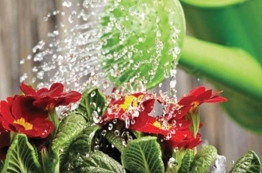Concise guidelines for gardening during shemitah

Click here to download the PDF file.
1. Planting and sowing are forbidden during shemitah.
2. Watering (irrigation) is permitted during shemitah, but only the amount necessary for proper maintenance of the vegetation.
3. Fertilization must be performed before shemitah. We recommend the use of slow-release fertilizers (SRF) or control-release fertilizers (CRF) before shemitah begins.
4. Weeds and weeding – Permitted when weeds threaten to take over the garden’s plants, or when there is concern that pests will find refuge in the weeds. We recommend the use of anti-sprouting agents or lawn weed herbicides. A motorized scythe (weed wacker) may be used, but it is forbidden to till or turn the soil.
5. Pruning bushes and hedges – When the hedge is full, it is permitted to prune it to maintain its existing shape. However, it is forbidden to prune hedges with gaps and ragged edges in order to fill in the gaps or enhance the hedge's growth. Pruning should be performed with a shinuy.
6. Shaping and pruning trees – This should be done before or after shemitah. It can be done during shemitah only when branches are dangerously protruding close to the sidewalk, road, or electrical wires, and pruning the trees would prevent accidents. Pruning should be performed with a shinuy.
7. Mowing the grass – It is permitted to mow a full lawn as usual. However, it is forbidden to mow a lawn with bald spots to encourage growth to fill in those spots.
8. Non-agricultural dirt work activities are permitted. Examples include paving roads and walkways and building supporting walls. However, garden soil may not be used to fill in supporting walls (for example).
9. Potted plants indoors may be tended to as in non-shemitah years. However, only the minimum care (enough to keep the plant alive) may be given to the following types of potted plants: (1) plants in planters with a volume exceeding 330 L, (2) plants under the open sky (eg. on the porch or roof), (3) plants with branches hanging above the ground or under the open sky.




